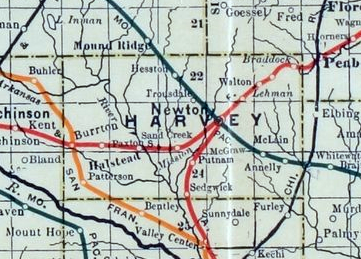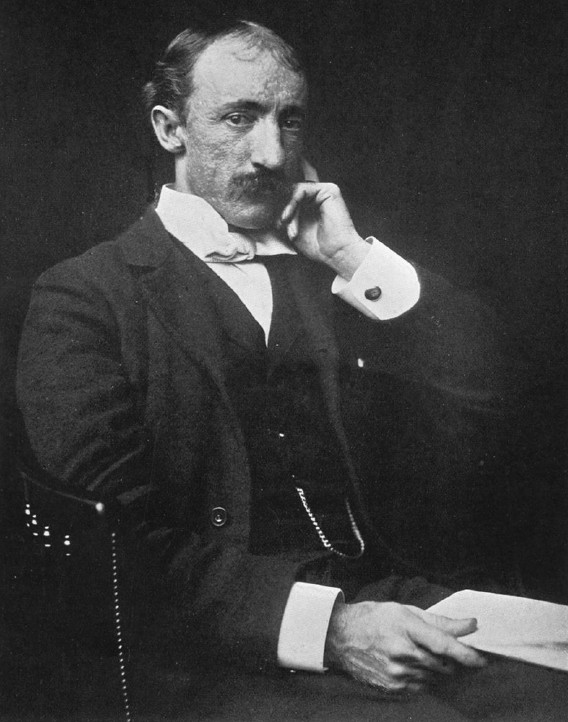|
Emil W. Haury
Emil Walter "Doc" Haury (May 2, 1904 in Newton, Kansas – December 5, 1992 in Tucson, Arizona) was an influential archaeologist who specialized in the archaeology of the American Southwest. He is most famous for his work at Snaketown, a Hohokam site in Arizona. Early years Emil was the youngest of four children born to Professor Gustav A. Haury and Clara K. Ruth Haury. Gustav was a professor at Bethel College a Mennonite college in Newton. When they were both six, Emil Haury met his future first wife, Hulda Penner, when she and her family visited Newton from a nearby Mennonite community. College career After graduating high school in 1923, Emil then attended the University of Arizona where he earned his bachelor's degree in 1927 and his M.A. in 1928. It was during the 1928–29 school year that he earned his first teaching position. In 1934 Haury earned his PhD from Harvard University. Field work and experience One of the first field experiences came in 1925. That year he ... [...More Info...] [...Related Items...] OR: [Wikipedia] [Google] [Baidu] |
Newton, Kansas
Newton is a city in and the county seat of Harvey County, Kansas, United States. As of the 2020 census, the population of the city was 18,602. Newton is located north of Wichita. The city of North Newton is located immediately north and exists as a separate political entity. Newton is located at the intersection of Interstate 135, U.S. Route 50, and U.S. Route 81 highways. History 19th century For millennia, the land now known as Kansas was inhabited by Native Americans. In 1803, most of modern Kansas was secured by the United States as part of the Louisiana Purchase. In 1854, the Kansas Territory was organized, then in 1861 Kansas became the 34th U.S. state. In 1872, Harvey County was founded. In 1871, the Atchison, Topeka and Santa Fe Railway extended a main line from Emporia westward to Newton by July 1871. The town soon became an important railroad shipping point of Texas cattle. The city was founded in 1871 and named after Newton, Massachusetts, home of so ... [...More Info...] [...Related Items...] OR: [Wikipedia] [Google] [Baidu] |
Mexico City
Mexico City ( es, link=no, Ciudad de México, ; abbr.: CDMX; Nahuatl: ''Altepetl Mexico'') is the capital and largest city of Mexico, and the most populous city in North America. One of the world's alpha cities, it is located in the Valley of Mexico within the high Mexican central plateau, at an altitude of . The city has 16 boroughs or ''demarcaciones territoriales'', which are in turn divided into neighborhoods or ''colonias''. The 2020 population for the city proper was 9,209,944, with a land area of . According to the most recent definition agreed upon by the federal and state governments, the population of Greater Mexico City is 21,804,515, which makes it the sixth-largest metropolitan area in the world, the second-largest urban agglomeration in the Western Hemisphere (behind São Paulo, Brazil), and the largest Spanish language, Spanish-speaking city (city proper) in the world. Greater Mexico City has a gross domestic product, GDP of $411 billion in 2011, which makes ... [...More Info...] [...Related Items...] OR: [Wikipedia] [Google] [Baidu] |
Pleistocene
The Pleistocene ( , often referred to as the ''Ice age'') is the geological Epoch (geology), epoch that lasted from about 2,580,000 to 11,700 years ago, spanning the Earth's most recent period of repeated glaciations. Before a change was finally confirmed in 2009 by the International Union of Geological Sciences, the cutoff of the Pleistocene and the preceding Pliocene was regarded as being 1.806 million years Before Present (BP). Publications from earlier years may use either definition of the period. The end of the Pleistocene corresponds with the end of the last glacial period and also with the end of the Paleolithic age used in archaeology. The name is a combination of Ancient Greek grc, label=none, πλεῖστος, pleīstos, most and grc, label=none, καινός, kainós (latinized as ), 'new'. At the end of the preceding Pliocene, the previously isolated North and South American continents were joined by the Isthmus of Panama, causing Great American Interchang ... [...More Info...] [...Related Items...] OR: [Wikipedia] [Google] [Baidu] |
Pueblo De Los Muertos
Pueblo de Los Muertos ("City of the Dead") is a historical ruin in the U.S. state of Arizona. It is located approximately west of Chandler. The large Hohokam settlement was situated within the southern Salado valley. Geography Los Muertos is situated west of Chandler and near Tempe, in the Salt River valley of southern Arizona. It covers an area greater than along the borders of a canal or artificial river, measuring almost . The Los Muertos and Pueblo de las Acequias ("City of the Canals") ruins are approximately apart. History In 1887, Frank Hamilton Cushing, leader of the Hemenway Southwestern Archaeological Expedition, explored the ruins of an early people, a place he called "El Pueblo de los Muertos"—"The City of the Dead"—in the center of which he uncovered many large communal houses, and beyond them found the remains of more sparsely-settled suburbs extending for . The largest of these houses was bigger than Casa Grande. It was surrounded by smaller edifices, ... [...More Info...] [...Related Items...] OR: [Wikipedia] [Google] [Baidu] |
Frank Hamilton Cushing
Frank Hamilton Cushing (July 22, 1857 in North East Township, Erie County, Pennsylvania – April 10, 1900 in Washington, D.C.) was an American anthropologist and ethnologist. He made pioneering studies of the Zuni Indians of New Mexico by entering into their culture; his work helped establish participant observation as a common anthropological research strategy. In recent years, however, questions have emerged about Cushing's activities among the Zuni. Consequently, Frank Cushing's work provides an important case study for considering the ethics of both ethnographic research and the generation of museum collections. Early life Cushing was born in the borough of North East, Pennsylvania. He later moved with his family to Western New York. As a boy he took an interest in the Native American artifacts in the surrounding countryside and taught himself how to knap flint (make arrowheads and such from flint). He published his first scientific paper when he was 17. After a brief pe ... [...More Info...] [...Related Items...] OR: [Wikipedia] [Google] [Baidu] |
Harris Village
Harris may refer to: Places Canada * Harris, Ontario * Northland Pyrite Mine (also known as Harris Mine) * Harris, Saskatchewan * Rural Municipality of Harris No. 316, Saskatchewan Scotland * Harris, Outer Hebrides (sometimes called the Isle of Harris), part of Lewis and Harris, Outer Hebrides * Harris, Rùm, a place on Rùm, Highland United States * Harris, Indiana * Harris, Iowa * Harris, Kansas * Harris Township, Michigan * Harris, Minnesota * Harris, Missouri * Harris, New York * Harris, North Carolina * Harris, Oregon * Harris, Wisconsin Elsewhere * Harris, Montserrat Other places with "Harris" in the name * Harrisonburg, Louisiana * Harrisonburg, Virginia * Harris County (other) * Harris Lake (other) * Harris Mountain (other) * Harris Township (other) * Harrisburg (other) * Harrison (other) * Harrisville (other) People * Harris (Essex cricketer) * Harris Jayaraj, an Indian music director * Harris (gi ... [...More Info...] [...Related Items...] OR: [Wikipedia] [Google] [Baidu] |
Canyon Creek Ruin
A canyon (from ; archaic British English spelling: ''cañon''), or gorge, is a deep cleft between escarpments or cliffs resulting from weathering and the erosive activity of a river over geologic time scales. Rivers have a natural tendency to cut through underlying surfaces, eventually wearing away rock layers as sediments are removed downstream. A river bed will gradually reach a baseline elevation, which is the same elevation as the body of water into which the river drains. The processes of weathering and erosion will form canyons when the river's headwaters and estuary are at significantly different elevations, particularly through regions where softer rock layers are intermingled with harder layers more resistant to weathering. A canyon may also refer to a rift between two mountain peaks, such as those in ranges including the Rocky Mountains, the Alps, the Himalayas or the Andes. Usually, a river or stream carves out such splits between mountains. Examples of mountain-type c ... [...More Info...] [...Related Items...] OR: [Wikipedia] [Google] [Baidu] |
Tusayan Ruins
The Tusayan Ruins (aka Tusayan Pueblo) is an 800-year-old Pueblo Indian site located within Grand Canyon National Park,Tusayan Ruin visitor brochure National Park Service and is considered by the (NPS) to be one of the major archeological sites in Arizona. The site consists of a small, u-shaped pueblo featuring a living area, storage rooms, and a . Tree ring studies indicate that the site was occupied for about twenty years, beginning around 1185. [...More Info...] [...Related Items...] OR: [Wikipedia] [Google] [Baidu] |
Mogollon Culture
Mogollon culture () is an archaeological culture of Native American peoples from Southern New Mexico and Arizona, Northern Sonora and Chihuahua, and Western Texas. The northern part of this region is Oasisamerica, while the southern span of the Mogollon culture is known as Aridoamerica. The Mogollon culture is one of the major prehistoric Southwestern cultural divisions of the Southwestern United States and Northern Mexico. The culture flourished from the archaic period, , to either 1450 or 1540 CE, when the Spanish arrived. Etymology The name ''Mogollon'' comes from the Mogollon Mountains, which were named after Don Juan Ignacio Flores Mogollón, Spanish Governor of New Spain (including what is now New Mexico) from 1712 to 1715. The name was chosen and defined in 1936 by archaeologist Emil W. Haury. Cultural traits The distinct facets of Mogollon culture were recorded by Emil Haury, based on his excavations in 1931, 1933, and 1934 at the Harris Village in Mimbres, New M ... [...More Info...] [...Related Items...] OR: [Wikipedia] [Google] [Baidu] |
New Mexico
) , population_demonym = New Mexican ( es, Neomexicano, Neomejicano, Nuevo Mexicano) , seat = Santa Fe , LargestCity = Albuquerque , LargestMetro = Tiguex , OfficialLang = None , Languages = English, Spanish ( New Mexican), Navajo, Keres, Zuni , Governor = , Lieutenant Governor = , Legislature = New Mexico Legislature , Upperhouse = Senate , Lowerhouse = House of Representatives , Judiciary = New Mexico Supreme Court , Senators = * * , Representative = * * * , postal_code = NM , TradAbbreviation = N.M., N.Mex. , area_rank = 5th , area_total_sq_mi = 121,591 , area_total_km2 = 314,915 , area_land_sq_mi = 121,298 , area_land_km2 = 314,161 , area_water_sq_mi = 292 , area_water_km2 = 757 , area_water_percent = 0.24 , population_as_of = 2020 , population_rank = 36th , 2010Pop = 2,117,522 , population_density_rank = 45th , 2000DensityUS = 17.2 , 2000Density = 6.62 , MedianHouseholdIncome = $51,945 , IncomeRank = 45th , AdmittanceOrder = ... [...More Info...] [...Related Items...] OR: [Wikipedia] [Google] [Baidu] |
Gila Pueblo Archaeological Foundation
The Gila Pueblo Archaeological Foundation was a research organization which conducted archaeological research in the American Southwest and surrounding areas. It was founded in 1928 in Globe, Arizona, by Harold S. Gladwin and Winifred (McCurdy) Gladwin.Haury, Emil W. (1992) ''Emil Haury's Prehistory of the American Southwest: Edited by J. Jefferson Reid and David E. Doyel'', Tucson & London: The University of Arizona Press It ceased operations in 1950. Beginning Harold S. Gladwin was a New York City stockbroker who left his position there and moved to Santa Barbara, California. There he met his future wife Winifred and William North Duane who introduced Gladwin to his cousin, archaeologist A.V. Kidder. Gladwin spent two field seasons with Kidder in northern Arizona. It was at that time when Gladwin's passion and curiosity for the Southwest grew and inspired him to start Gila Pueblo. Research With the backing and funding of Gladwin Gila Pueblo was able to do excavations and resea ... [...More Info...] [...Related Items...] OR: [Wikipedia] [Google] [Baidu] |




